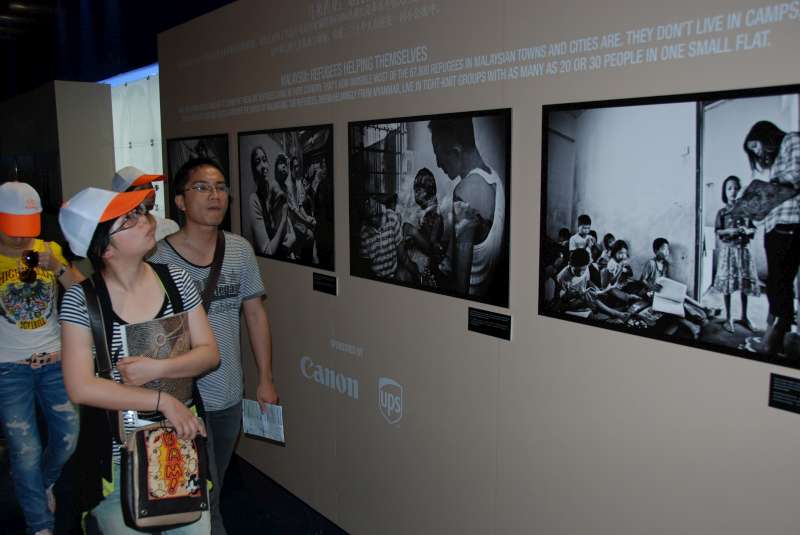Shanghai: Expo 2010 visitors peek into lives of refugees around the world
News Stories, 14 June 2010
SHANGHAI, China, June 14 (UNHCR) – Visitors to Expo 2010 lined up early to get into the UN pavilion at the world's fair here to learn about the resilience of refugees living in cities – told by acclaimed photographer Zalmaï through an exhibit of 17 stark black-and-white images that opened at the weekend.
"You may be surprised, but unlike the image of refugees living in tents, actually more than half of the refugees we care for live in cities around the world," Giuseppe de Vincentis, UNHCR's regional representative in China, told a standing room-only crowd at the formal opening of the exhibit, "Invisible in the City: the Lives of Urban Refugees."
"The exhibit is in keeping with the theme of the Expo, 'Better City, Better Life'," de Vincentis added, "because refugees can contribute to the cities where they live if they are allowed to. Refugees are human beings who are not a threat, but on the contrary need just to have some sympathy and support to have normal lives."
Like 3.3 billion other people in the world, refugees have been steadily moving to cities, mostly in developing countries, a trend that has accelerated since the 1950s. Today, more than 50 per cent of the world's 10.5 million refugees under UNHCR's mandate are now living in cities and towns across the globe.
Last year, UNHCR commissioned Zalmaï, himself a former refugee from Afghanistan, to document the struggles and hopes of refugees and people displaced within their own countries in South Africa, Malaysia and Colombia, in what he called one of his most challenging projects.
"These people are living inside the cities, but they don't exist," Zalmaï said. "They are hard to find. They are afraid of deportation, of the police, of detention centres. They feel they are vulnerable. Sometimes, their only protection is the big city itself. So, they just try to be invisible."
The exhibit is part of UNHCR's global World Refugee Day celebrations, centered around June 20, a day that honours the millions of uprooted people the agency serves.
For 20-year-old economics student Xu Tianjiao, Zalmaï's photos were an opportunity to put a human face to refugees whom she had previously only seen on television. "The pictures made me feel sympathy towards refugees," she said, after studying the photos for a long time while visiting Expo with her parents.
Reached by phone in Afghanistan, Zalmaï said he thought Expo 2010 was an important showcase for the "pain, struggle and challenges" of being a refugee and for the work of the UN refugee agency. About 400,000 people are visiting Expo every day.
"If someone comes to Expo and doesn't know anything about refugees, they may go home understanding a bit better," Zalmaï said. "That's the purpose. We are all doing what we have to, to help people."
After it leaves Expo on June 30, the exhibit, sponsored by Canon Inc. and UPS, will tour at least five cities on several continents, including Beijing and Washington, D.C.
By Kitty McKinsey
In Shanghai, China





















